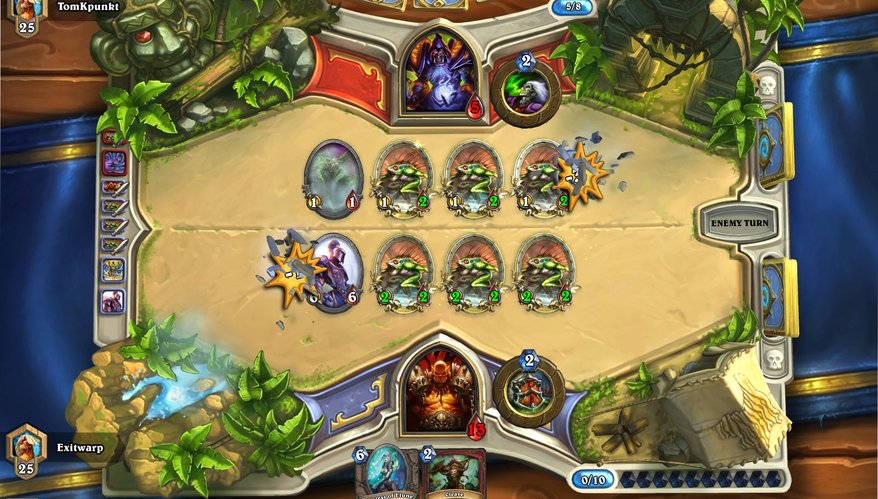Hearthstone hands-on: balancing Blizzard's moreish card battle game

Hearthstone has a big year ahead of it. The game's 'closed' beta is stretching the definition of the term, and its popularity on Twitch and YouTube suggests that the game is only going to grow from here. It has become Blizzard's most hotly anticipated game, which is more than anyone expected from a side project produced by a team of just 15 people.
That said, I'm starting to suspect that the game will go through a rough patch when it is opened up to the public. I went through a period of really disliking it, and I've seen the same comments pop up over and over again. Complaints about balance are common, often pinned onto rare cards that require a huge investment of time or real money to acquire. Then there are the classes that simply feel unfair to play against, or the Arena – a premium mode where you assemble a new deck from random cards – that can feel like gambling.

The key word here is 'feel'. As I stuck with Hearthstone I started to enjoy it more. I figured out what were balance issues and what were things I simply wasn't very good at yet, improved my knowledge of the game, and started to have more fun (and win, from time to time.)
It turns out that this is how Blizzard sees it too. “There are two ways to balance the game,” says production director Jason Chayes. “One is looking at the raw analytical data – which cards are dominating, which are weaker than we'd like them to be. The other part of that is how it feels. We might have a card that isn't particularly dominant, but it feels bad to play against – that's not good either.”
One example of this was the Priest's Mind Control card, which allows a player to permanently steal an enemy minion. There are counters to it, and it didn't feature much in high-end play, but that feeling of being stung for playing a minion you'd been waiting all game to deploy made it a common cause for complaint among the game's community. It had its mana cost increased not simply for mathematical balance reasons, then, but to change the context in which players see it – to make it feel fairer.

It's going to be interesting to follow the game as it negotiates the next couple of months. Blizzard wants Hearthstone to be the biggest digital CCG in the world, and plans are underway to build a structured e-sport around it. First, though, the developer needs to figure out a way to help players negotiate the frustration that can follow the honeymoon period.
Part of that solution, I suspect, will be found in how players interact with each other outside of the game. Hearthstone's in-game chat is currently limited to emotes – Blizzard wants to maintain the spirit of that feature, but also allow players to send friend requests to former opponents after a game. Likewise, expansions to in-game stat tracking and the official website will make it easier for newcomers to see how other players are performing and hopefully gain the same sense of context that helped me get past my own period of disillusionment.
Keep up to date with the most important stories and the best deals, as picked by the PC Gamer team.
Either way, this is going to be Hearthstone's year. It's up to Blizzard to determine what kind of year that is.
Joining in 2011, Chris made his start with PC Gamer turning beautiful trees into magazines, first as a writer and later as deputy editor. Once PCG's reluctant MMO champion , his discovery of Dota 2 in 2012 led him to much darker, stranger places. In 2015, Chris became the editor of PC Gamer Pro, overseeing our online coverage of competitive gaming and esports. He left in 2017, and can be now found making games and recording the Crate & Crowbar podcast.


